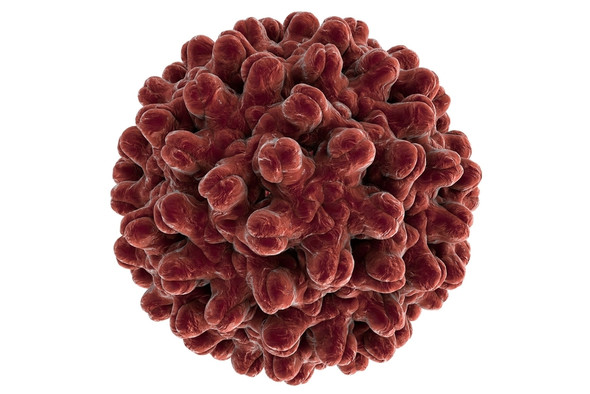Description
MOUSE ANTI-HEPATITIS E VIRUS CAPSID (ORF2) ANTIBODY (BD6)
Hepatitis E virus capsid ORF2 antibody (clone BD6) is an unconjugated mouse monoclonal antibody to Hepatitis E Virus ORF2.
PRODUCT DETAILS – MOUSE ANTI-HEPATITIS E VIRUS CAPSID (ORF2) ANTIBODY (BD6)
- Mouse anti Hepatitis E Virus Capsid (ORF2) antibody (BD6), clone number: BD6.A2.A9.E11.F8.
- Isotype – Mouse IgG1 kappa.
- Immunogen used HEV ORF2 amino acids 1-660 (REC31653).
- Protein G purified, presented in PBS, pH 7.4.
BACKGROUND
Hepatitis E virus (HEV) is a small quasi-enveloped, ( )-sense, single-stranded RNA virus belonging to the Hepeviridae family. HEV infects ∼20 million people annually (Smith, et al., 2014) and is a leading cause of acute hepatitis worldwide (Kamar, et al., 2017). The viral RNA is ∼7.2 kb in size with three partially overlapping open reading frames (Purcell & Emerson, 2001). ORF1 encodes a non-structural polyprotein that is essential for viral replication. ORF2 encodes the viral capsid protein and ORF3 encodes a small phosphoprotein that is involved in virion morphogenesis and egress (LeDesma et al., 2019).
ORF2 is initially synthesized as a large glycoprotein precursor which is then cleaved into the mature viral capsid protein; it has also been implicated in viral replication, as it binds to the 5′ end of the viral genome (Surjit, et al., 2004). There are three different forms of ORF2: (i) the ORF2i form (infectious ORF2) which is found in association with infectious particles, (ii) the secreted ORF2g (glycosylated ORF2) and ORF2c (cleaved ORF2) forms which are the major antigens in HEV-infected patient sera (but not associated with infectious particles) (Montpellier, et al., 2018; Qi, et al., 2015; Ankavay et al., 2019). These proteins may also inhibit antibody-mediated neutralization (Yin et al., 2018). The main HEV immune epitopes, especially neutralizing epitopes, are located on the ORF2 protein (Zhou, et al., 2016). There are two potential N-glycosylation sites in the S domain, and one in the P domain within a region that forms a protruding spike from the shell, forming a cell-attachment and neutralizing antigenic site (Xu, et al., 2016; Zhang, et al., 2016). HEV can be diagnosed by the presence of IgM anti-HEV in the serum or by detection of viral RNA in the serum or feces by PCR. However, both serologic tests and molecular tests vary greatly in sensitivity, making diagnosis, and especially seroprevalence studies, less reliable than for the other human hepatitis viruses.
REFERENCES
- Ankavay M, Montpellier C, Sayed IM, et al. (2019). New insights into the ORF2 capsid protein, a key player of the hepatitis E virus lifecycle. Sci Rep. 2019;9(1):6243.
- Kamar, N., Izopet, J., Pavio, N. & et al., 2017. Hepatitis E virus infection. Nat Rev Dis Primers, Volume 3, p. 17086.
- LeDesma R, Nimgaonkar I, Ploss A. (2019). Hepatitis E Virus Replication. Viruses. 2019;11(8):719.
- Montpellier, C., Wychowski, C. & et al., 2018. Hepatitis E Virus Lifecycle and Identification of 3 Forms of the ORF2 Capsid Protein. Gastroenterology, 154(1), pp. 211-223.
- Purcell, R. H. & Emerson, S. U., 2001. Hepatitis E virus. In: D. M. Knipe & P. M. Howley , eds. Fields virology. Philadelphia, Pa.: Lippincott Williams & Wilkins, pp. 3051-3061.
- Qi, Y., Zhang, F. & et al., 2015. Hepatitis E Virus Produced from Cell Culture Has a Lipid Envelope. PLoS One, 10(7).
- Smith, D. B., Simmonds, P. & et al., 2014. Consensus proposals for classification of the family Hepeviridae. International Committee on Taxonomy of Viruses Hepeviridae Study Group. J Gen Virol., 95(10), pp. 2223-32.
- Surjit, M., Jameel, S. & et al., 2004. The ORF2 protein of hepatitis E virus binds the 5′ region of viral RNA. J Virol., 78(1), pp. 320-8.
- Xu, M., Behloul, N. & et al., 2016. Role of asparagine at position 562 in dimerization and immunogenicity of the hepatitis E virus capsid protein. Infect Genet Evol., Volume 37, pp. 99-107.
- Yin, X. et al. (2018). Origin, antigenicity, and function of a secreted form of ORF2 in hepatitis E virus infection. Proc Natl Acad Sci USA 3, 201721345–6 (2018).
- Zhang, X., Bilic, I. & et al., 2016. C-Terminal Amino Acids 471-507 of Avian Hepatitis E Virus Capsid Protein Are Crucial for Binding to Avian and Human Cells. PLoS One, 11(4).
- Zhou, Y., Zhao, C. & et al., 2016. Characteristics and Functions of HEV Proteins. Adv Exp Med Biol., Volume 948, pp. 17-38.












